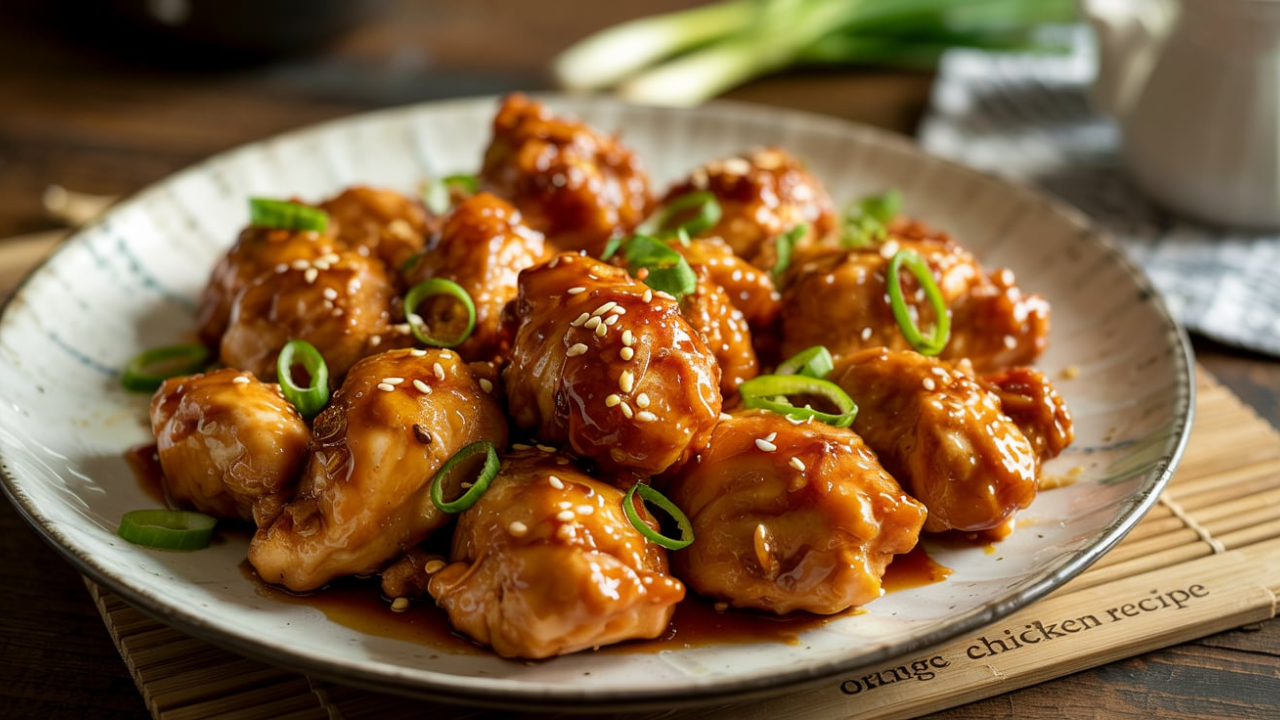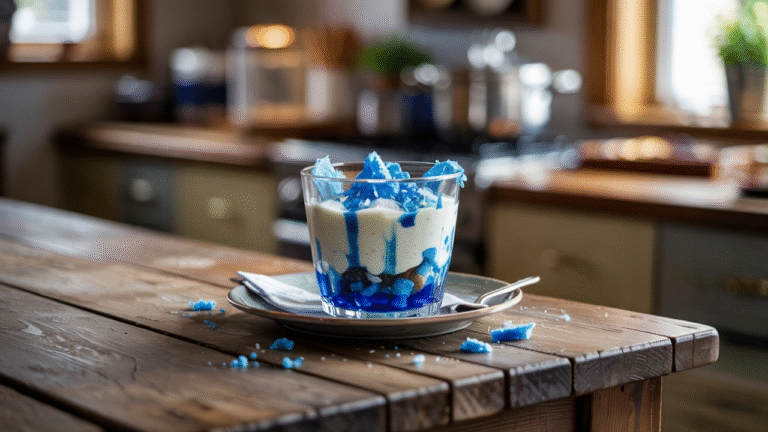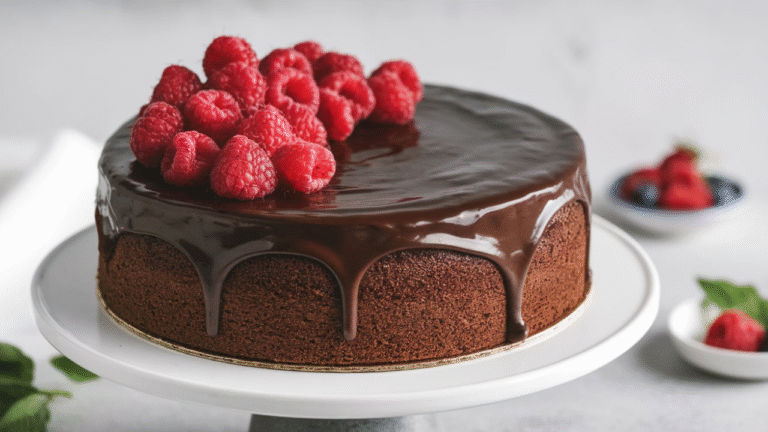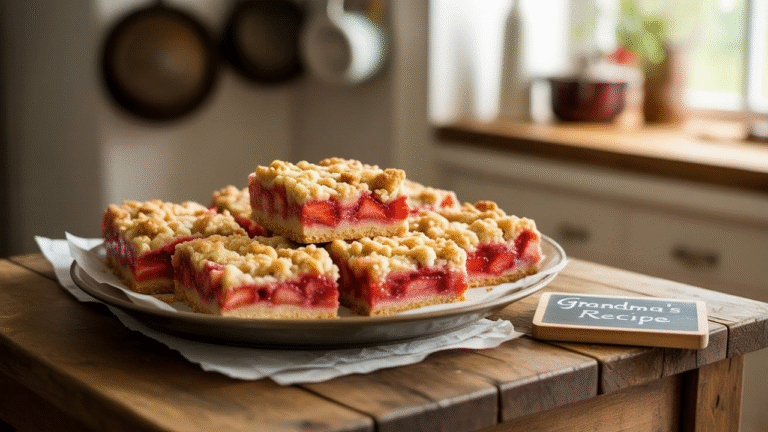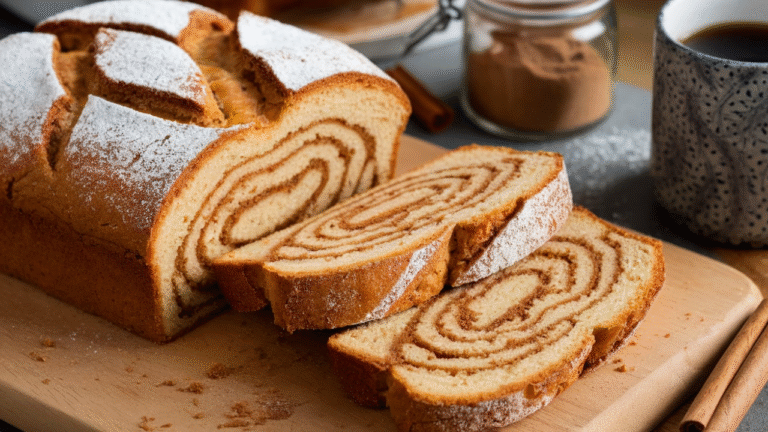Orange chicken is one of those dishes that can turn a boring Tuesday night into a celebration. It’s got crispy bites of chicken coated in a sticky, tangy, and slightly sweet orange sauce that makes you want to lick the plate (and no judgment if you do). The good news? You can make it at home without needing a culinary degree, a wok worth $300, or mysterious ingredients you’ve never heard of.
I’ve been making orange chicken for years, and after burning it once, overcooking it twice, and making it too sweet three times, I’ve finally cracked the code. This recipe isn’t just about following steps — it’s about knowing why each step matters so you never end up with soggy chicken or bland sauce again.
The Beauty of Orange Chicken
Orange chicken originated in Chinese-American cuisine, not traditional Chinese cooking. While Panda Express popularized it in the U.S., the real magic happens when you make it yourself. According to Technomic’s 2024 Foodservice Consumer Trend Report, over 73% of Americans who enjoy Asian-inspired dishes say they prefer “sweet and tangy” flavors — orange chicken fits that bill perfectly.
At its best, orange chicken nails three things:
- Crispy chicken that doesn’t go limp under sauce.
- Balanced sauce — tangy from orange, sweet from sugar, and savory from soy.
- Freshness — citrus juice that hasn’t been sitting in a bottle for months.
When these come together, you get something so satisfying that ordering takeout feels unnecessary.
Ingredients You’ll Need
I’m not going to throw 20 ingredients at you just to sound impressive. You only need the essentials, but each plays a key role.
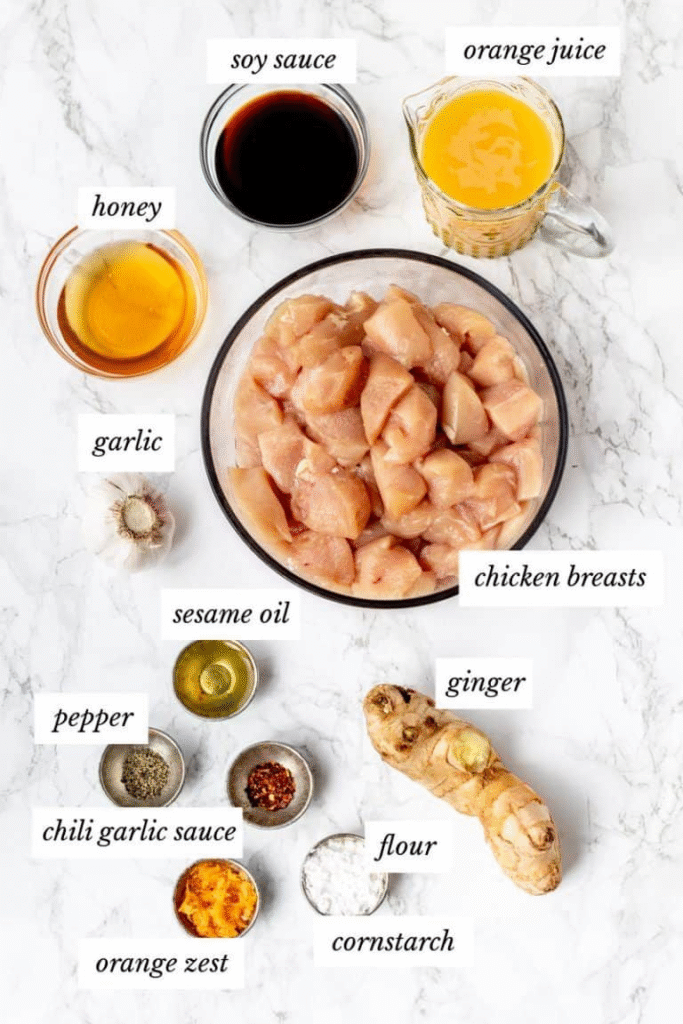
For the chicken:
- 1 lb boneless, skinless chicken breast (or thighs for juicier bites)
- 1 cup cornstarch (or half cornstarch, half flour for a lighter crunch)
- 2 large eggs
- ½ tsp salt
- ½ tsp black pepper
- Oil for frying (vegetable, canola, or peanut)
For the sauce:
- 1 cup orange juice (freshly squeezed is gold)
- 1 tbsp orange zest (adds concentrated citrus punch)
- 3 tbsp soy sauce
- ¼ cup sugar (adjust to taste)
- 2 tbsp rice vinegar
- 1 tbsp cornstarch + 2 tbsp water (for thickening)
- 2 cloves garlic, minced
- 1 tsp fresh ginger, grated
- 1 tsp chili flakes (optional, for a gentle kick)
For garnish:
- Sesame seeds
- Chopped green onions
Step-by-Step Cooking Method
Step 1: Prep the Chicken
Cut the chicken into bite-sized cubes. Here’s the trick: uniform size matters. If some pieces are small and others big, you’ll either overcook the small ones or undercook the big ones. Aim for 1-inch chunks — big enough to stay juicy, small enough to coat evenly.
Pat them dry. If the chicken’s wet, the coating will slide off like a bad sunburn. Dry chicken = better crisp.
Step 2: Create the Crispy Coating
Set up two bowls — one with beaten eggs, one with cornstarch seasoned with salt and pepper. Dip the chicken in egg first, then coat generously in cornstarch.
Cornstarch is your best friend here. According to Cook’s Illustrated, cornstarch creates a crisper crust than flour because it has less protein, meaning it doesn’t develop as much gluten. The result? That addictive crunch you hear in good fried chicken.
Step 3: Fry the Chicken
Heat oil in a deep skillet or wok to 350°F. If you don’t have a thermometer, drop in a tiny piece of coated chicken — if it sizzles instantly and floats up, you’re ready.
Fry in batches. Overcrowding the pan drops the temperature and leads to greasy, sad chicken. Give them space to crisp up.
Each batch should take about 4–5 minutes, until golden and cooked through. Remove and place on a wire rack over a tray — this keeps them crispy (a plate with paper towels makes them steam and soften).
Step 4: Make the Orange Sauce
While the chicken rests, grab a clean pan. Add a splash of oil, then sauté garlic and ginger for 30 seconds. This wakes them up without burning them.
Add the orange juice, zest, soy sauce, sugar, vinegar, and chili flakes. Stir and let it simmer for 3–4 minutes. You’ll notice it reducing slightly, intensifying the flavor.
Mix cornstarch with water in a small bowl, then slowly whisk it into the sauce. Cook for another 2 minutes until glossy and thick enough to coat a spoon.
Step 5: Toss and Serve
Add the crispy chicken into the sauce and toss quickly. The key is speed — leave it too long, and your chicken loses its crunch. Garnish with sesame seeds and green onions, then serve hot with steamed rice or noodles.
Pro Tips for Perfect Orange Chicken Every Time
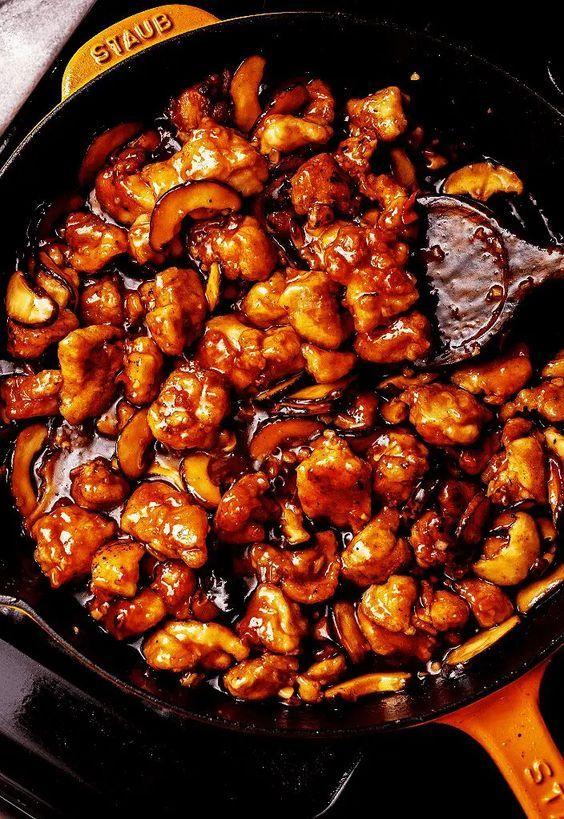
- Fresh orange juice > bottled — bottled juice can taste flat and overly sweet.
- Thigh meat stays juicier — but breast works fine if you don’t overcook it.
- Double fry for extra crunch — fry once at 350°F, remove, rest 5 minutes, then fry again at 375°F for 1 minute.
- Make ahead? Keep chicken and sauce separate until serving to avoid sogginess.
- Want it healthier? Bake at 425°F for 20 minutes, flipping halfway. Still crisp, less oil.
Nutrition Breakdown
Per serving (based on 4 servings):
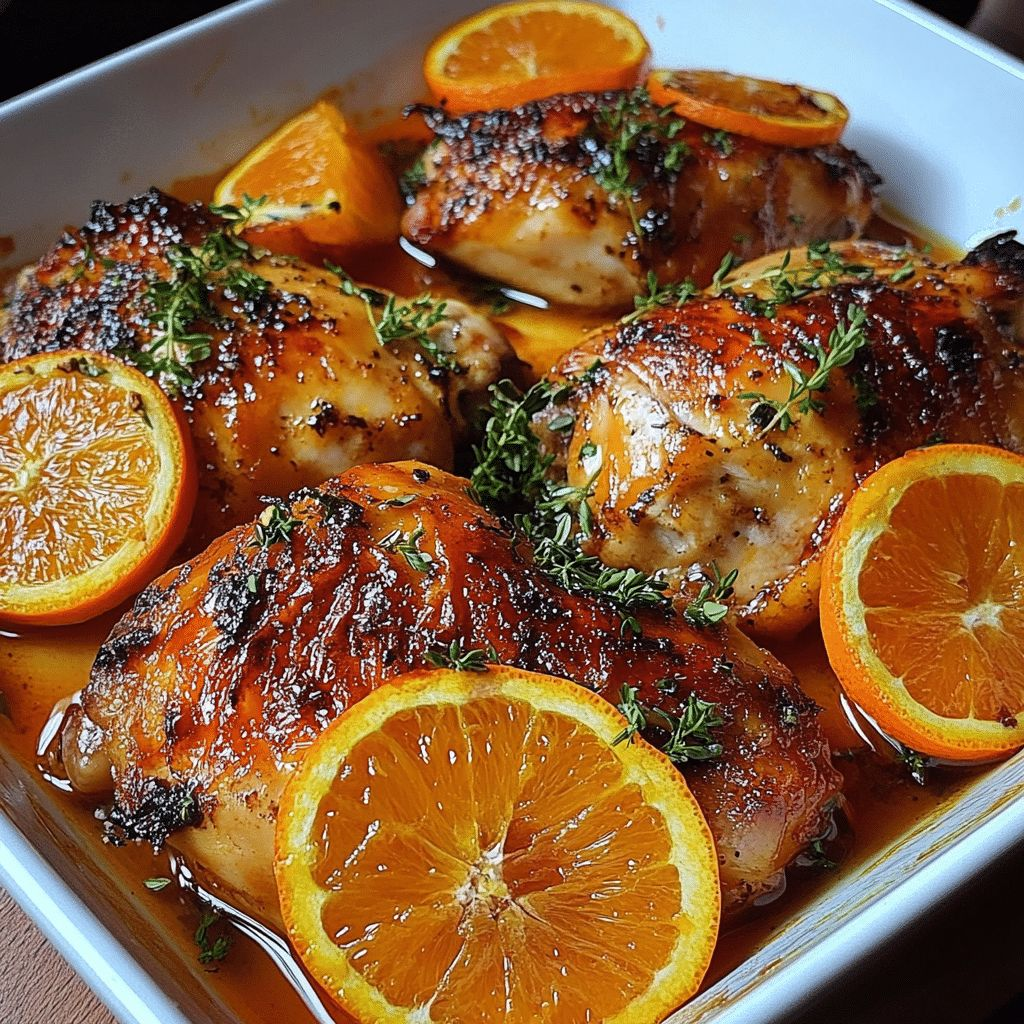
- Calories: ~420
- Protein: 28g
- Carbs: 38g
- Fat: 16g
(Source: USDA FoodData Central)
It’s not a low-calorie salad, but it’s better than takeout, which often hides extra sugar and sodium. Making it at home lets you control what goes in.
Why Homemade Beats Takeout
Here’s a quick reality check:
A standard orange chicken combo meal from a fast-food chain can pack 1,500+ calories and over 3,000mg sodium (more than the daily recommended amount). By making it at home, you save at least 500 calories and cut sodium in half — all while keeping the flavor.
Plus, no mystery breading that turns to mush during delivery. You’re eating it fresh, at its crunchiest.
Creative Variations
Once you master the base, the possibilities open up.
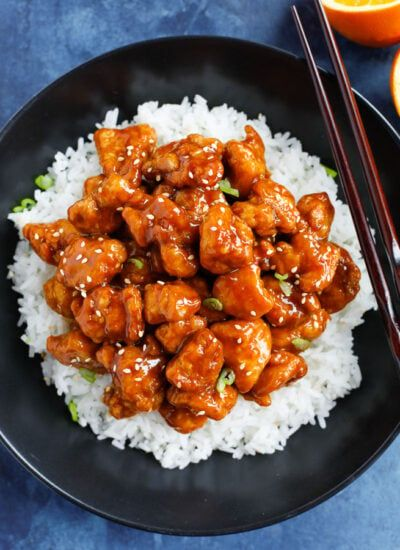
- Spicy Orange Chicken – Add sriracha or fresh chili for heat lovers.
- Honey Orange Chicken – Replace half the sugar with honey for a floral sweetness.
- Gluten-Free Version – Use tamari instead of soy sauce and all cornstarch for coating.
- Orange Cauliflower – Same sauce, but swap chicken for roasted cauliflower florets.
Storage & Reheating Tips
- Fridge: Store chicken and sauce separately for up to 3 days.
- Freezer: Freeze chicken after frying (before saucing) for up to 1 month. Reheat in the oven, then toss with fresh sauce.
- Reheat: Skip the microwave. Use a skillet or oven for best texture.
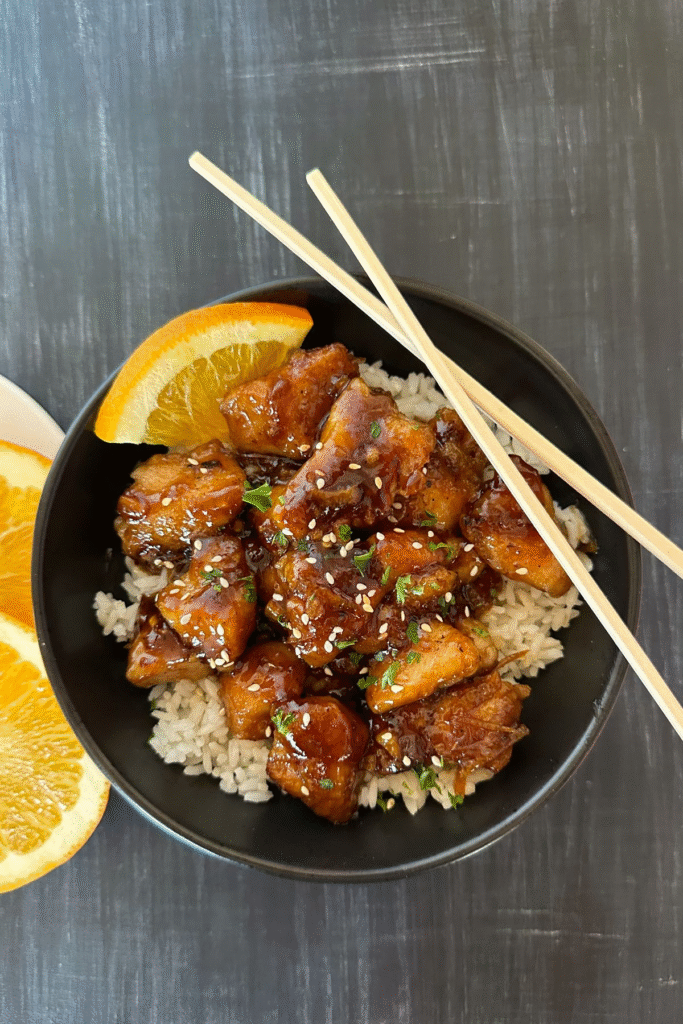
Final Thoughts
Orange chicken isn’t complicated — it’s about knowing the little tricks that make it great. Once you’ve done it a couple of times, you’ll wonder why you ever settled for soggy takeout. The balance of crispy, tangy, sweet, and savory is worth every minute, and honestly, once you taste it fresh out of your own kitchen, you’ll be ruined for chain restaurant versions forever.

